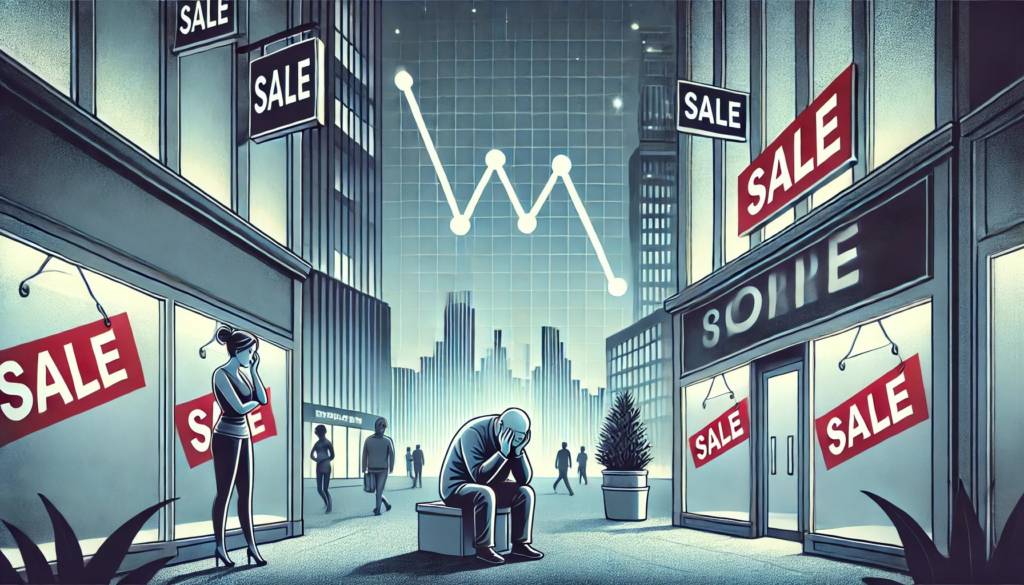S&P 500: 5.56% DOW: 4.97% NASDAQ: 7.29% 10-YR Yield: 4.47%
What Happened?
After what Wall Street suffered through the other week, in the wake of Liberation Day, last week saw just the opposite. After “Liberation Day” brought the announcement of sweeping global tariffs, markets were desperate for a lifeline, or at least a pause in the pain. They got both. A surprise 90-day delay in the Trump administration’s blanket tariff rollout lit the match, and the fire which may have been stimulated further when Trump declared it a “great time to buy the dip” on the podium, and on X.
That was all markets needed. Major indices ripped higher, staging one of the strongest weekly gains of the year and clawing back much of the prior week’s losses. Risk-on sentiment returned in force, with beaten-down cyclicals, tech, and consumer stocks leading the charge. Traders dumped defensives and rotated back into growth. Volatility cooled, but didn’t disappear. With sentiment still on edge, the market remains glued to every headline, tweet, and Fed whisper.
Meanwhile, CPI, PPI, and Consumer Sentiment data delivered plenty of conflicting signals, which we’ll unpack in more detail below. But make no mistake, the real driver this week was trade. The 90-day pause may have offered a breather, but it’s just that, a window. With no long-term resolution in place, markets should brace for more swings than a Fed commentary day during options expiry week.
Besides for CPI & PPI talk we’ll provide updates into where tariff policy stands today, what inflation data is, and isn’t, telling us, and why Main Street is starting to sweat even as Wall Street rallies.

U.S. stock markets skyrocket after Trump announces tariffs pause
- China retaliates with 125% tariffs on all US goods.
- Trump halts country specific tariffs for 90 days, besides for China.
- Total tariffs on China amounting to 145%.
The key takeaway – A high-stakes ping-pong match is playing out on Capitol Hill this week as the Trump Administration volleys tariff threats and temporary pauses in a bid to assert control over America’s trade future. It’s a drama fit for a Wall Street soap opera, with global markets caught squarely in the middle.
Last week’s symbolic Liberation Day came and went, but any real liberation for markets or multinationals remains elusive. While the data has yet to paint a clear picture on impact, investor sentiment has spoken loud and clear: stocks slumped hard on fears that the U.S. can’t domestically support its ever-growing appetite for goods if global supply chains remain tangled in tariffs. In true Trump fashion, the messaging was both forceful and fuzzy. “Play fair and don’t retaliate, and you’ll be rewarded,” he remarked, cryptic encouragement that came with a partial tariff pause. Country-specific levies were put on hold for 90-days, but the broad 10% blanket tariff stayed firmly in place, leaving both allies and adversaries guessing.
Markets, desperate for a silver lining, took the pause as a lifeline. Equities bounced back sharply, clinging to hope that escalation might give way to negotiation. Still, the broader outlook is anything but stable. As China retaliates with further tariff policies placed on the U.S. amounting to 125%Trump is now turning his attention to the Fed, urging rate cuts to juice the economy. But Jerome Powell & Co. aren’t biting just yet, they’re waiting for more definitive signs of economic slowdown before making their next move.

CPI inflation report shows pre-tariff price pressures eased in March
- The Consumer Price Index dropped -0.1% from 2.5%-2.4%.
- Analysts anticipate 3-4 rate cuts this year alone.
- PPI decreased -0.4% in March, beating expectations by 0.6%.
The key takeaway – What many analysts and policy makers alike use as barometer to gauge the effects of macroeconomic and monetary policy; the CPI is a valuable tool many like to keep a keen eye on. The latest CPI and PPI reports, widely watched by both investors and policymakers, offered a surprise: prices ticked down across the board. That’s right, despite the swirl of headlines around the Trump Administration’s sweeping tariff proposals, consumer prices for the current basket of goods fell, bucking expectations of a sharp uptick.
Producer prices told a similar story. The PPI, a gauge of input costs for businesses, also declined modestly, suggesting that inflationary pressures aren’t yet showing up in the supply chain either. For companies, that means no immediate squeeze on margins. But with effects on tariffs looming, the road ahead may not stay smooth.
Economists had braced for early signs of price pressure as tariffs threatened to push import costs higher. Instead, inflation cooled. Whether this is a temporary reprieve or the calm before the storm remains to be seen. With tariff policies still taking shape and questions swirling about which nations will bear the brunt, it’s too early to declare victory, or sound the alarm.
For now, no leading indicators are flashing red on growth. But in a market where perception often moves faster than policy, all eyes remain glued to the data tape.

Consumer Sentiment Dips To Nearly 3-Year Low
- Consumer sentiment for next month came in at 50.8, dropping from the original expectations of 57.
- The consensus was collected from March 25th – April 8th which was during Liberation Day.
- Consumers cited personal finances, incomes and inflation as warning signs that raise the risk of recession.
The key takeaway – The latest read on consumer sentiment landed this week and it wasn’t pretty. According to the University of Michigan’s Consumer Sentiment Index, Americans are feeling more pessimistic about the economy than they have at any point in the last three years. While these surveys don’t move markets the way hard data might, they serve as a real-time gut check on how everyday people are processing inflation, interest rates, and economic uncertainty. Think of it less as a crystal ball and more like a group therapy session over the phone—Americans answering the question: “How are you really feeling about your money right now?”
The answer? Not great. Expectations for inflation just hit a 44-year high, with respondents bracing for higher prices over both the short and long term. That’s a red flag for policymakers, because inflation expectations can be self-fulfilling, if people think prices will rise, they adjust spending and wage demands accordingly, fueling the very fire everyone’s trying to put out.
It’s not just inflation fears. Confidence in income stability, job prospects, and overall economic direction all took a hit. The data hints at a growing unease that wages may not keep pace with the cost of living, especially if rates stay elevated and geopolitical tensions continue to stir volatility in global markets. Consumers may not be economists, but they do vote with their wallets, and a sentiment this low often translates into a pullback in discretionary spending, which can ripple through earnings seasons in quarters ahead.
Wall Street may be debating soft landing versus hard landing, but Main Street is already buckling its seatbelt. Confidence is waning, inflation fears are mounting, and if sentiment doesn’t stabilize soon, the consumer, the backbone of the U.S. economy, might just start to step off the playing field.
From Around the Watercooler

- Jamie Dimon says U.S. economy faces “considerable turbulence“
- Kevin O’Leary is calling for Trump to hit China with 400% tariffs
- A bond selloff is worrying Wall Street. Here’s why it matters for you
- Federal Reserve rules out liquidity injection
- In Secret Meeting, China Acknowledged Role in U.S. Infrastructure Hacks



Comments are closed